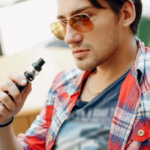The Origins of Kava
Indigenous peoples of the South Pacific have used kava, scientifically known as Piper methysticum, for centuries for its relaxing and social properties. The plant thrives in Fiji, Vanuatu, Tonga, and Samoa, where it holds cultural and ceremonial significance. Traditionally, people grind the root into a powder, mix it with water, and consume it during rituals, ceremonies, and social gatherings.
The Science Behind Kava’s Effects
Kava’s calming effects come from its active compounds, kavalactones, which interact with brain neurotransmitters to induce relaxation and euphoria. Unlike alcohol, kava does not impair cognitive function or cause hangovers, making it a popular natural way to unwind.
Research indicates that kava may reduce stress, relieve anxiety, and improve sleep quality. Some studies even suggest it could treat generalized anxiety disorder and insomnia. However, more research is needed to fully understand kava’s long-term effects and safety.
Cultural Significance and Rituals
In South Pacific cultures, kava plays a central role in social gatherings and ceremonies. “Takis” or “kava circles” bring people together to share stories, resolve conflicts, and strengthen social bonds. The ritual of preparing and consuming kava follows specific protocols, highlighting the importance of community and tradition.
Participating in a kava ceremony offers physical relaxation and a deeper connection to South Pacific cultural heritage, emphasizing community, mindfulness, and nature’s gifts.
Modern Applications and Global Reach
Recently, kava has gained popularity worldwide, appealing to those seeking natural alternatives to pharmaceuticals for managing stress and anxiety. Kava now comes in various forms, including capsules, tinctures, and extracts, making it accessible beyond the South Pacific. It’s essential to choose high-quality products from reputable sources to ensure purity and safety.
The Importance of Responsible Consumption
While kava offers many benefits, consuming it responsibly and in moderation is crucial. Excessive use can lead to adverse effects, including liver toxicity and dependency. Pregnant or breastfeeding women and individuals with liver conditions should avoid kava. Consulting with a healthcare professional before incorporating kava into your wellness routine is essential, especially if you take medications or have underlying health concerns.
Conclusion
In a fast-paced world filled with stress, finding moments of peace and tranquility is essential for well-being. Kava, with its rich cultural heritage and potential health benefits, offers a natural path to relaxation and mindfulness. Whether enjoyed in a traditional ceremony or as part of a modern wellness regimen, exploring the tranquil depths of kava invites us to slow down, connect with others, and embrace nature’s serene gifts.









